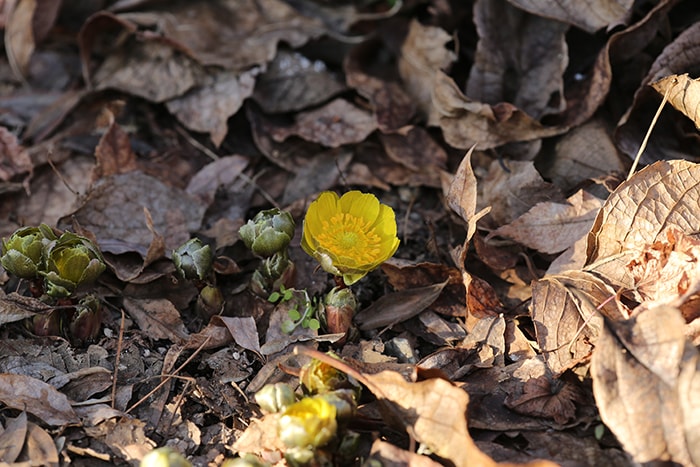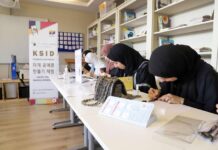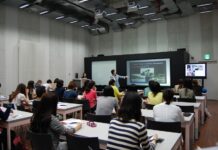
An Adonis amurensis blooms in January despite the cold weather.
A freeze has arrived once again this January. In the middle of the freeze, though, a flower has bloomed. A fewAdonis amurensis flowers have bloomed, showing their yellow petals at the Hongneung Forest on Jan. 6, when the first cold weather alert of the year was issued. It turned out to have been the coldest day of this winter, or thesohan, according to the Korea Forest Research Institute (KFRI) on Jan. 8.
The flowers there have never bloomed before in early January, and it’s blooming 37 days earlier than expected. The expected target date was Feb. 11, plus or minus eight days on either side.
Adonis amurensis blooms when the accumulated average daily temperature over 0 degrees Celsius reaches and exceeds 18.5 degrees Celsius. The figure on Jan. 6 hit 31.5 degrees Celsius, 1.7 times higher than the accumulated figure at which the flower generally blooms. The average temperature in December 2015 was 2 degrees Celsius higher than usual due to the Super El Nino effect that started in November last year, which brought frequent rains. This is believed to have comprehensively affected these unprecedented flower blooms in early January.
It takes six years for an Adonis amurensis to sprout from seed, said the KFRI. The institute hopes that people learn and understand that the flower is blooming after enduring a harsh winter under a dump of dried leaves or snow.
The Korean name for the flower, boksucho, contains “a wish for both fortune (bok) and longevity (su).” The flower generally blooms in early spring and this has given the flower several other names, as well. It’s calledseollyeonhwa because it’s like a “lotus (lyeonhwa) that blooms in the snow (seol).” It’s called an ice flower orbinglihwa, because it is a “flower (hwa) that blooms between (li) the ice (bing).” It has also been called a wonilchosince it blooms in the morning on New Year’s Day (wonil).
By Wi Tack-whan, Chang Iou-chung
Korea.net Staff Writers
Photo: Korea Forest Research Institute
whan23@korea.kr























